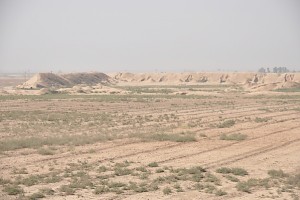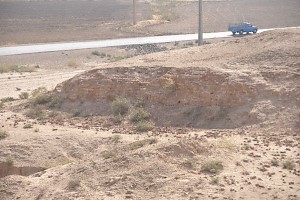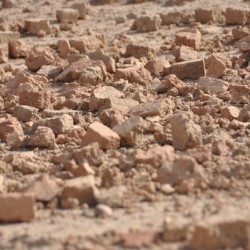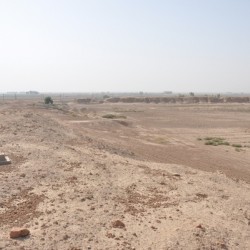Iwan-e Karkheh
Q69123340Iwan-e Karkheh: modern name of a Sasanian city, about 20 kilometers northwest of Susa; modern Sorkheh-ye Sheykh 'Aziz.

Iwan-e Karkheh, "the vault near Karkheh river", is the modern name of the ruins of an ancient city, largely unexplored by archaeologists, except for two brief campaigns in the 1950s. The first conclusions were intriguing. It is a Sasanian city, founded in the fourth century CE and surrounded by a large, rectangular wall. The enceinte, which is about four kilometers from north to south and one kilometer from east to west, can be seen over large distances.

The city was founded by Shapur II (r.309-379) after he had sacked Susa; it is about twenty kilometers from the old city to the new, which is on the opposite bank of the river Choaspes, the modern Karkheh.
A large building, excavated in 1950, may have been his palace. The walls were covered with plaster, the building was surrounded by a garden, and it contained a transversal barrel-vault of a type that was to become popular in Christian churches, but has not been attested earlier than Iwan-e Karkheh. This building, which also contained a square hall under a dome, later served as a mosque.
 Iwan-e Karkheh, Bricks |
 Iwan-e Karkheh, Southeastern wall |
 Iwan-e Karkheh, Southeastern wall, Bricks |
 Iwan-e Karkheh, Glazed sherd |
Reports in the western press, published in the summer of 2009, that the site was damaged because it was used for waste disposal, are incorrect. The photos on this page were taken at almost the same time.
Getting there
If you decide to go, take the road from Andimeshk to Ahvaz, turn to the right to Deloran, and after about fifteen kilometer, when the road forks and the Deloran road leads to the right, turn to the left. By then, you will already have seen the walls. The village between the ruins and the present course of the Karkheh is called Sorkheh-ye Sheykh 'Aziz, "Sheikh Aziz's market".